
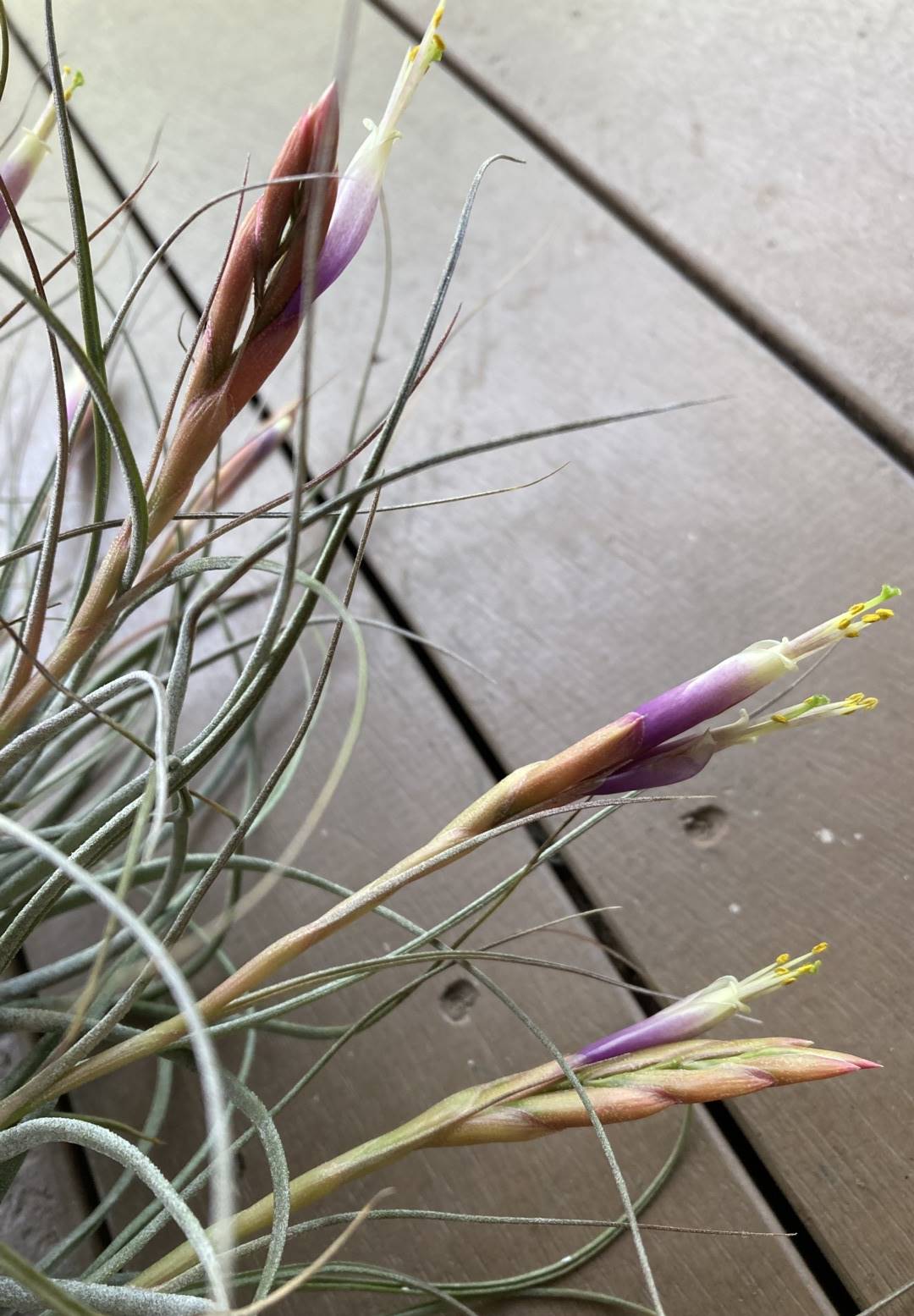


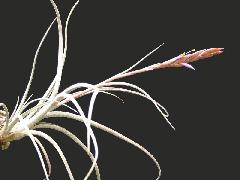


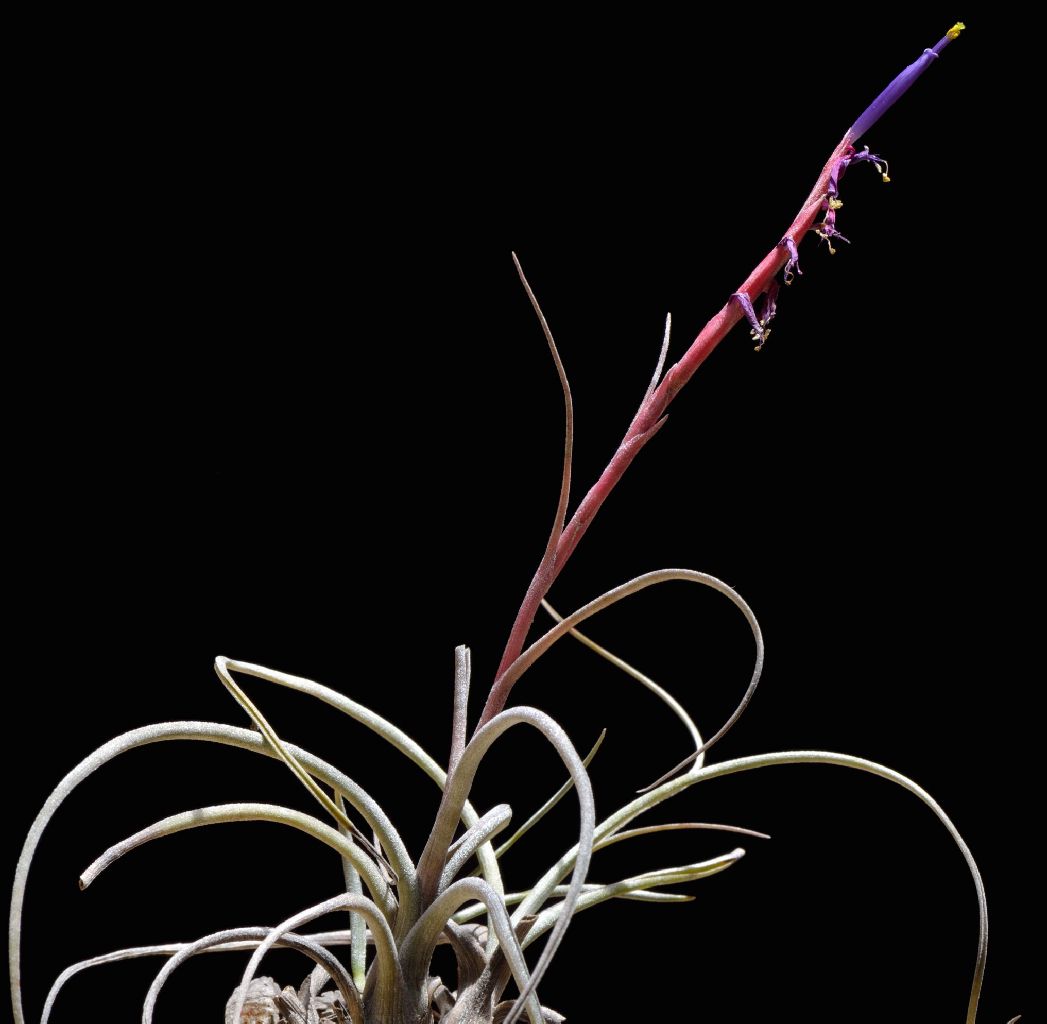


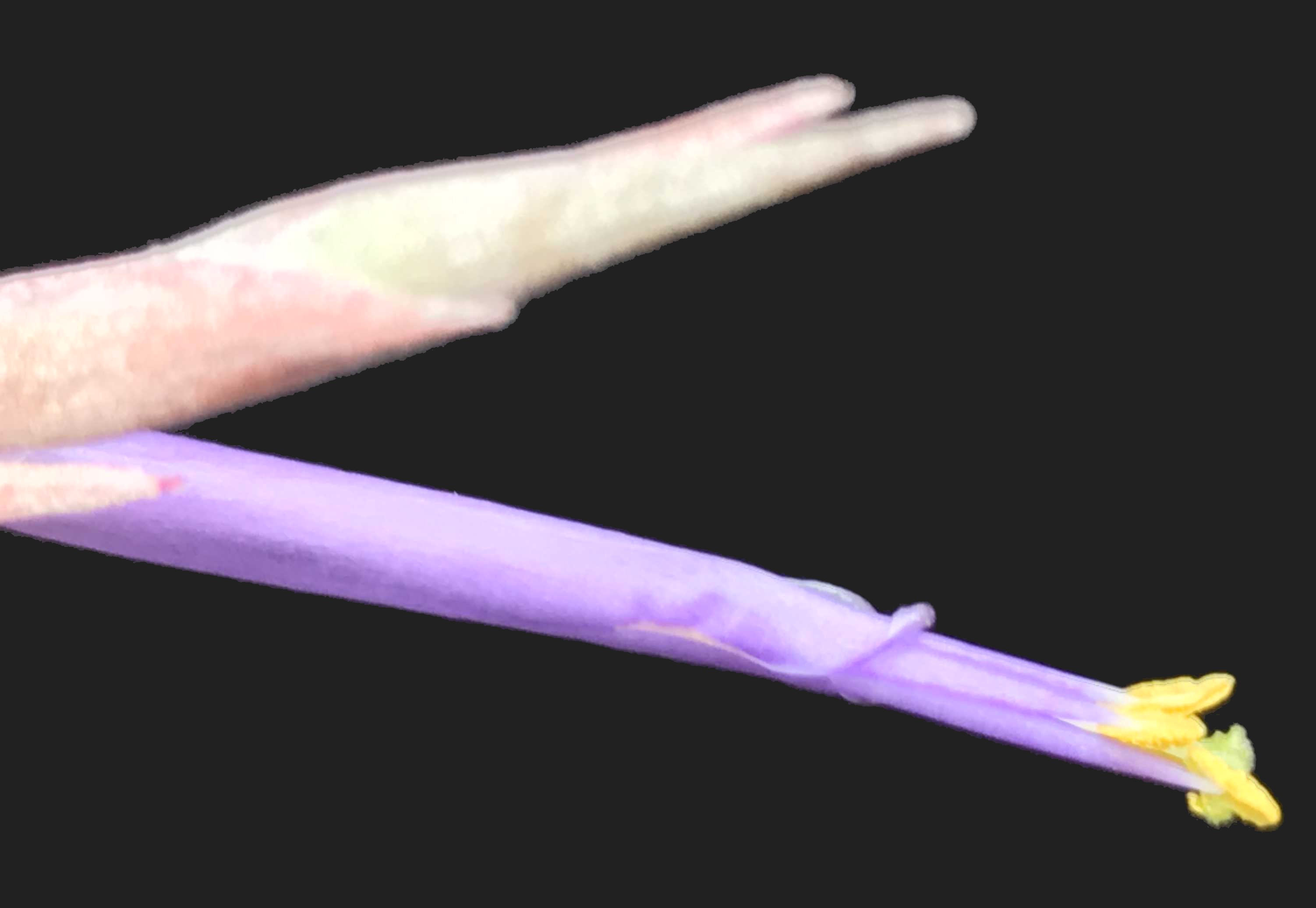
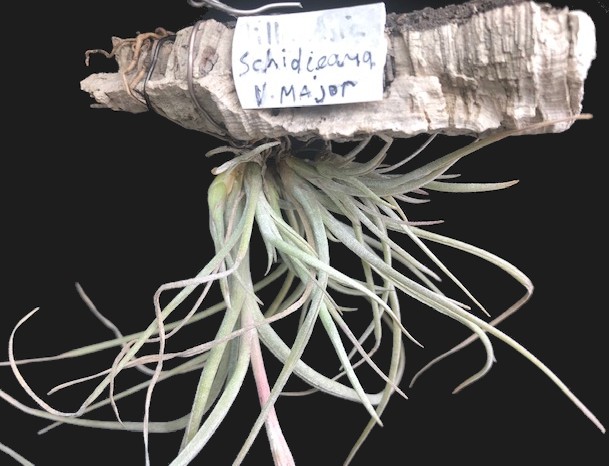
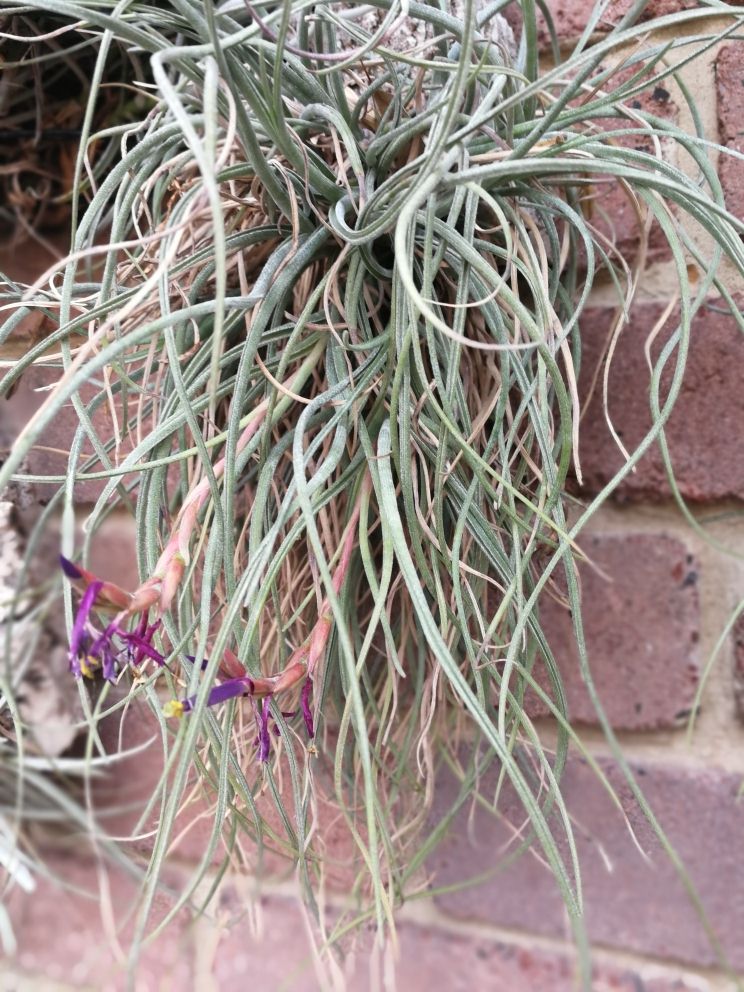
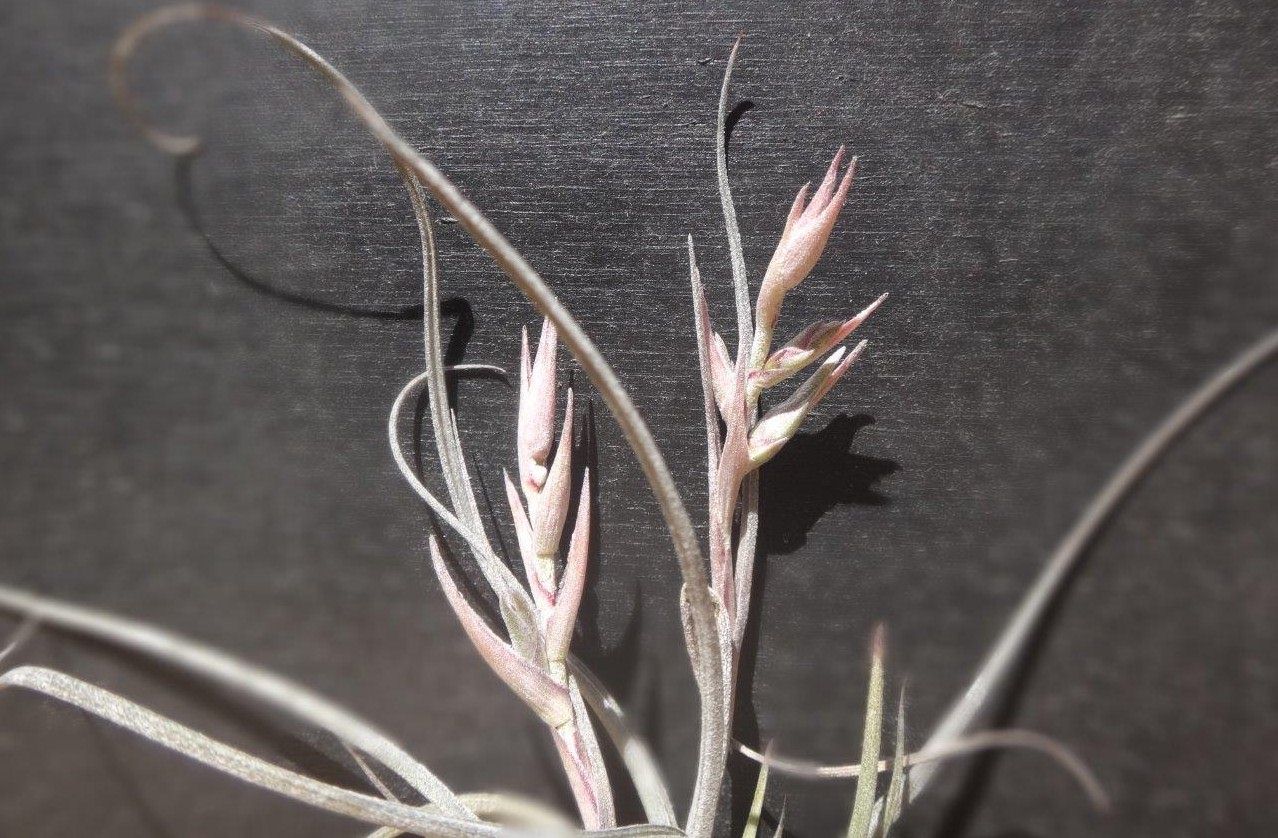
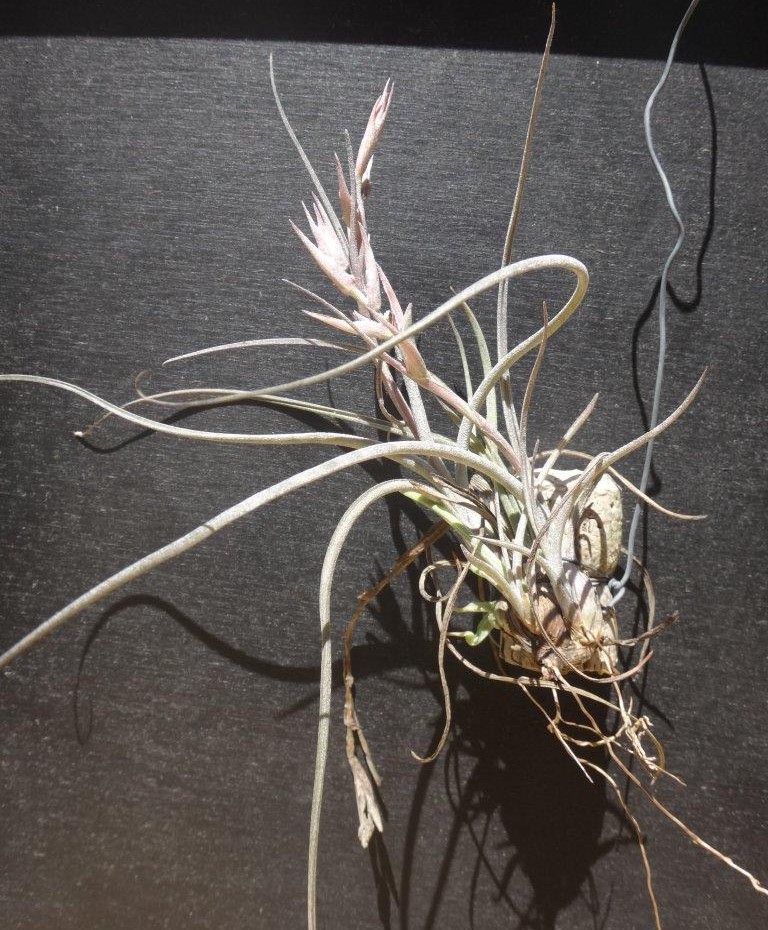

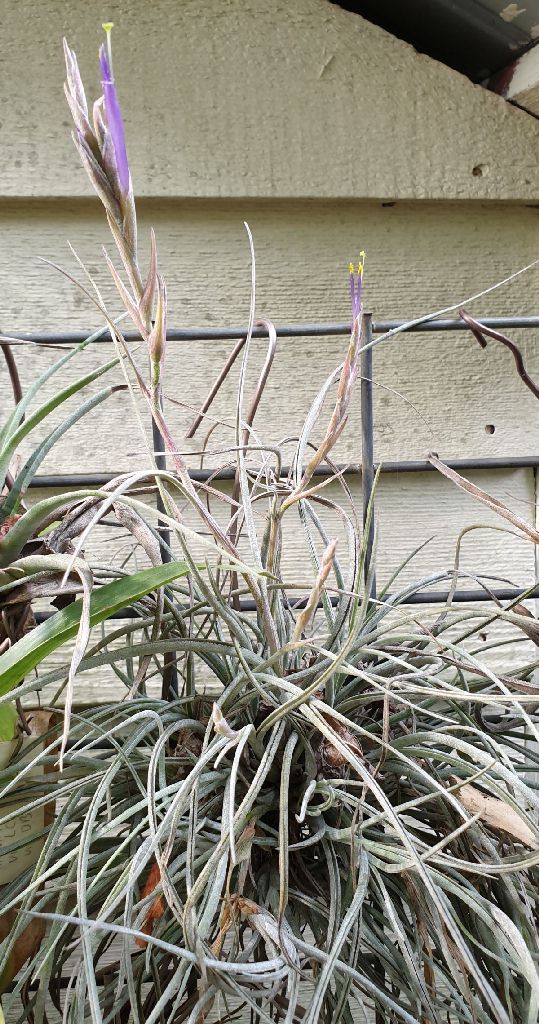

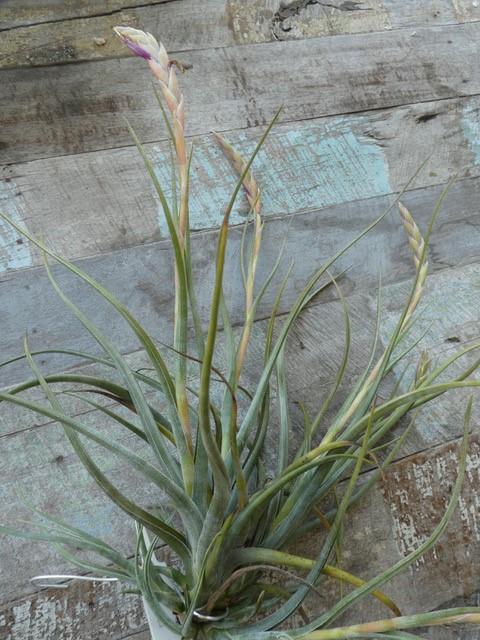
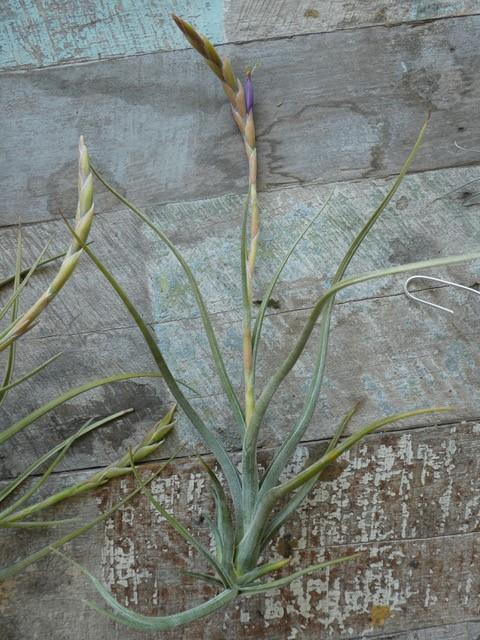

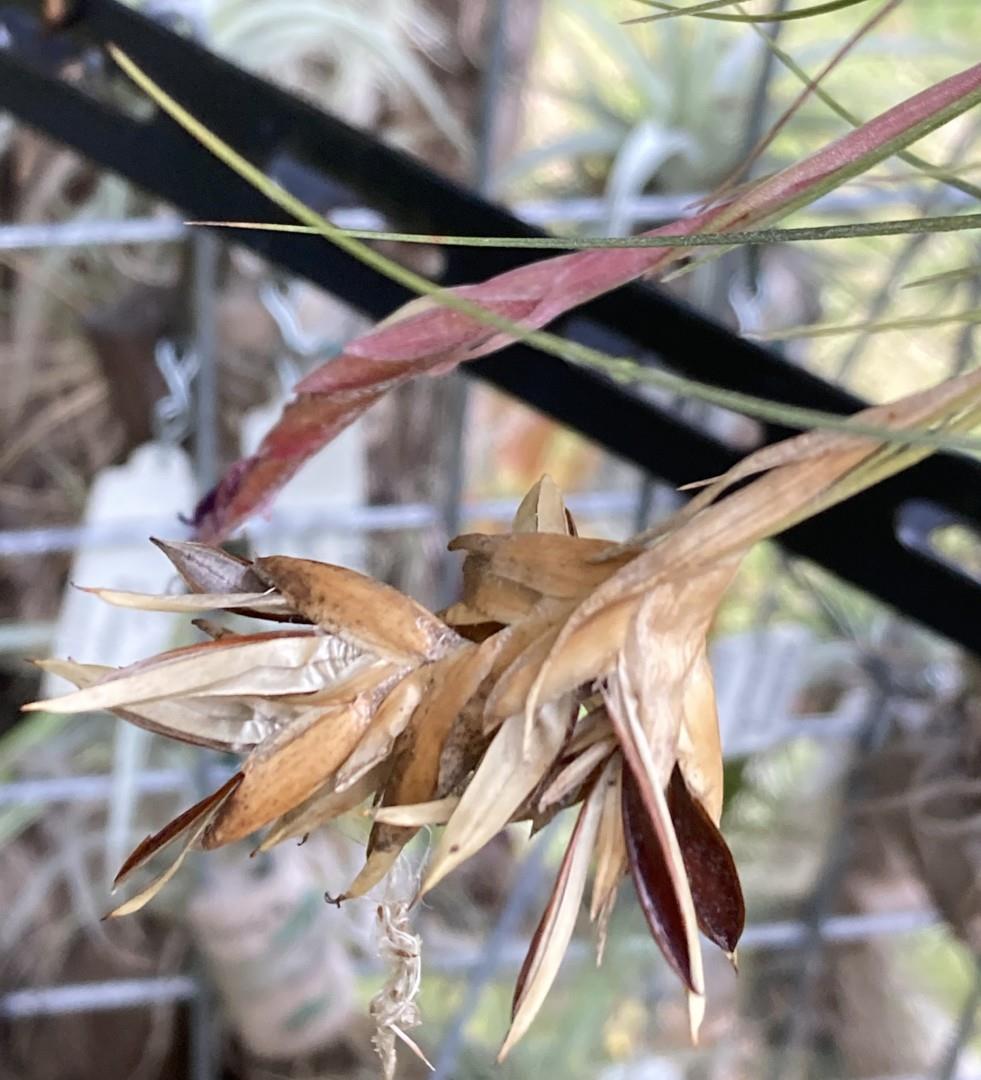
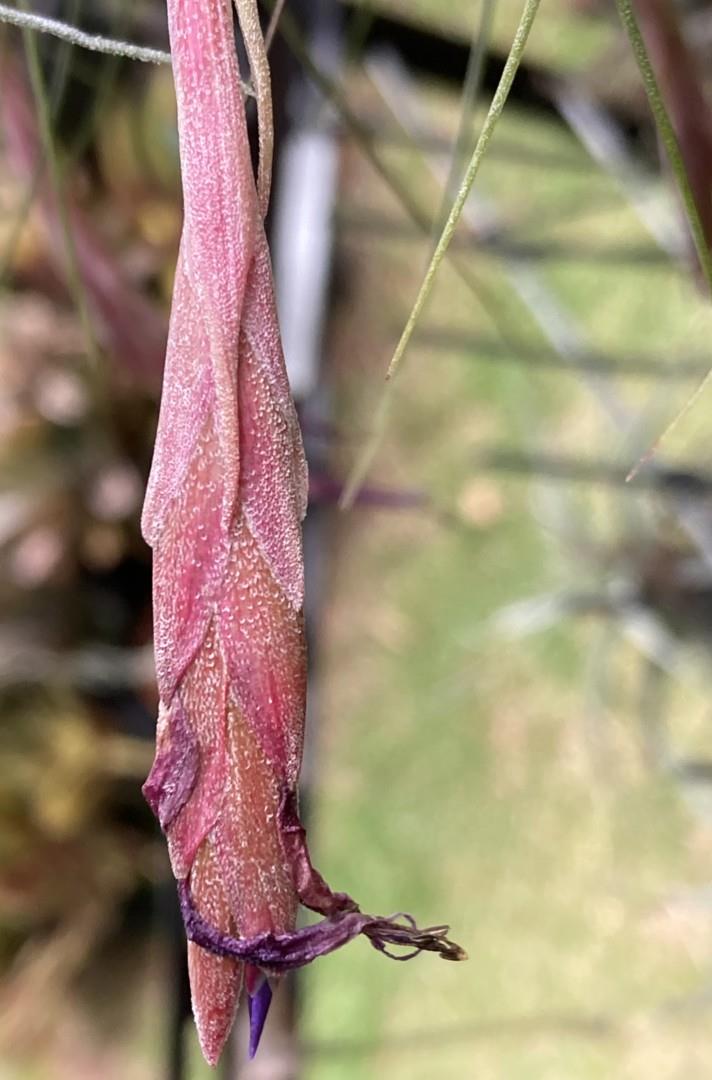
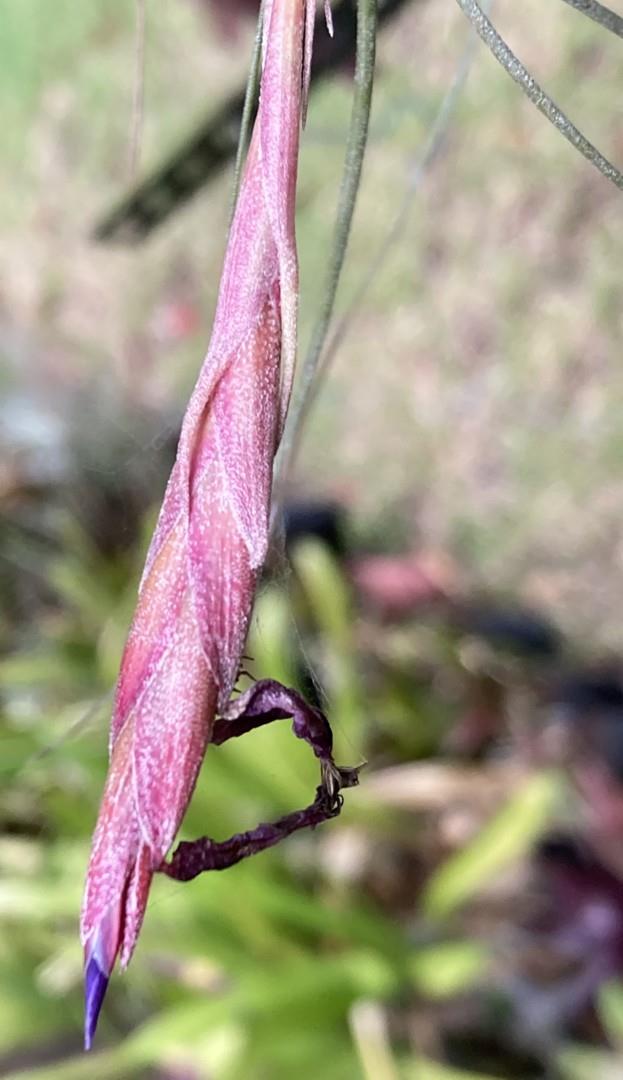
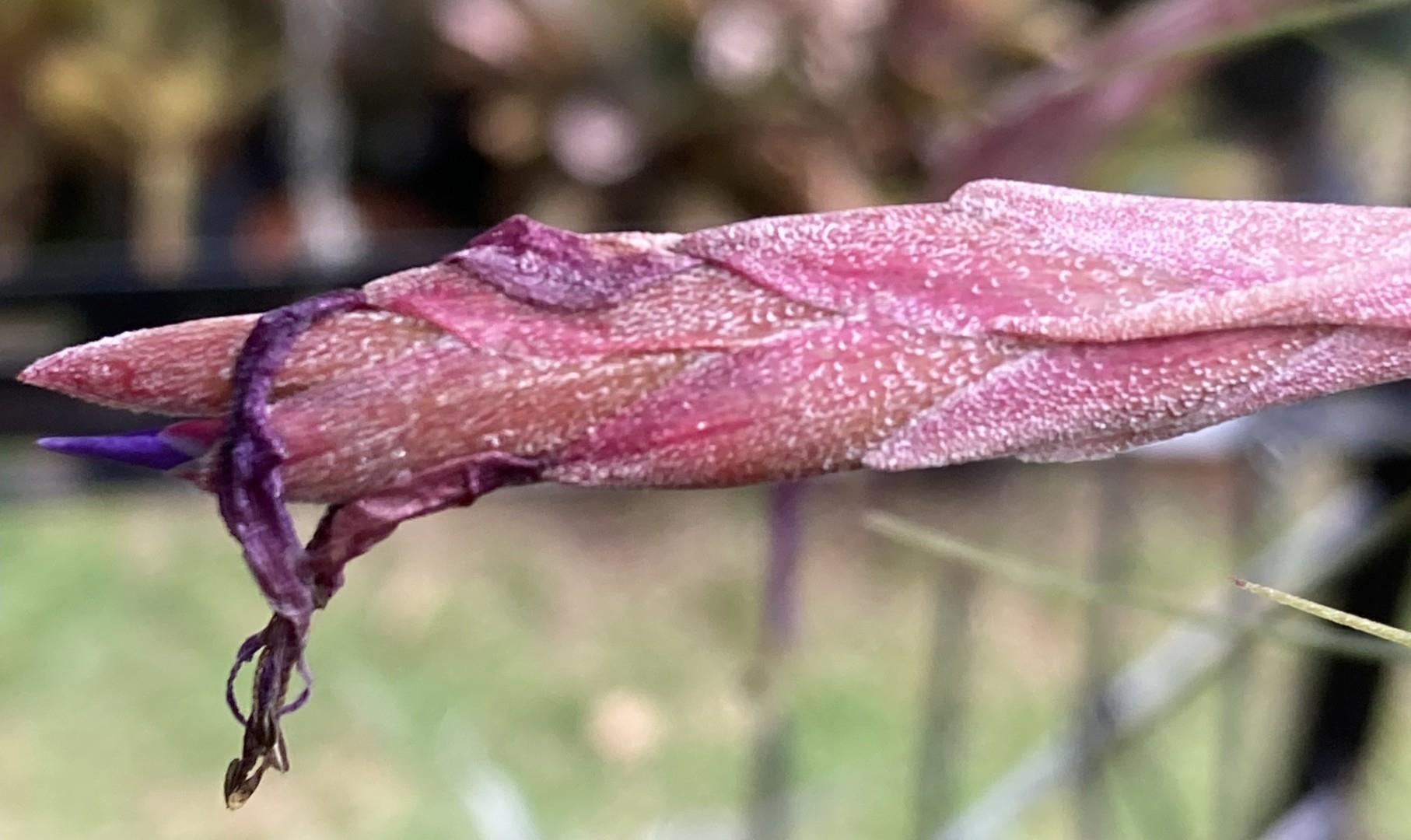
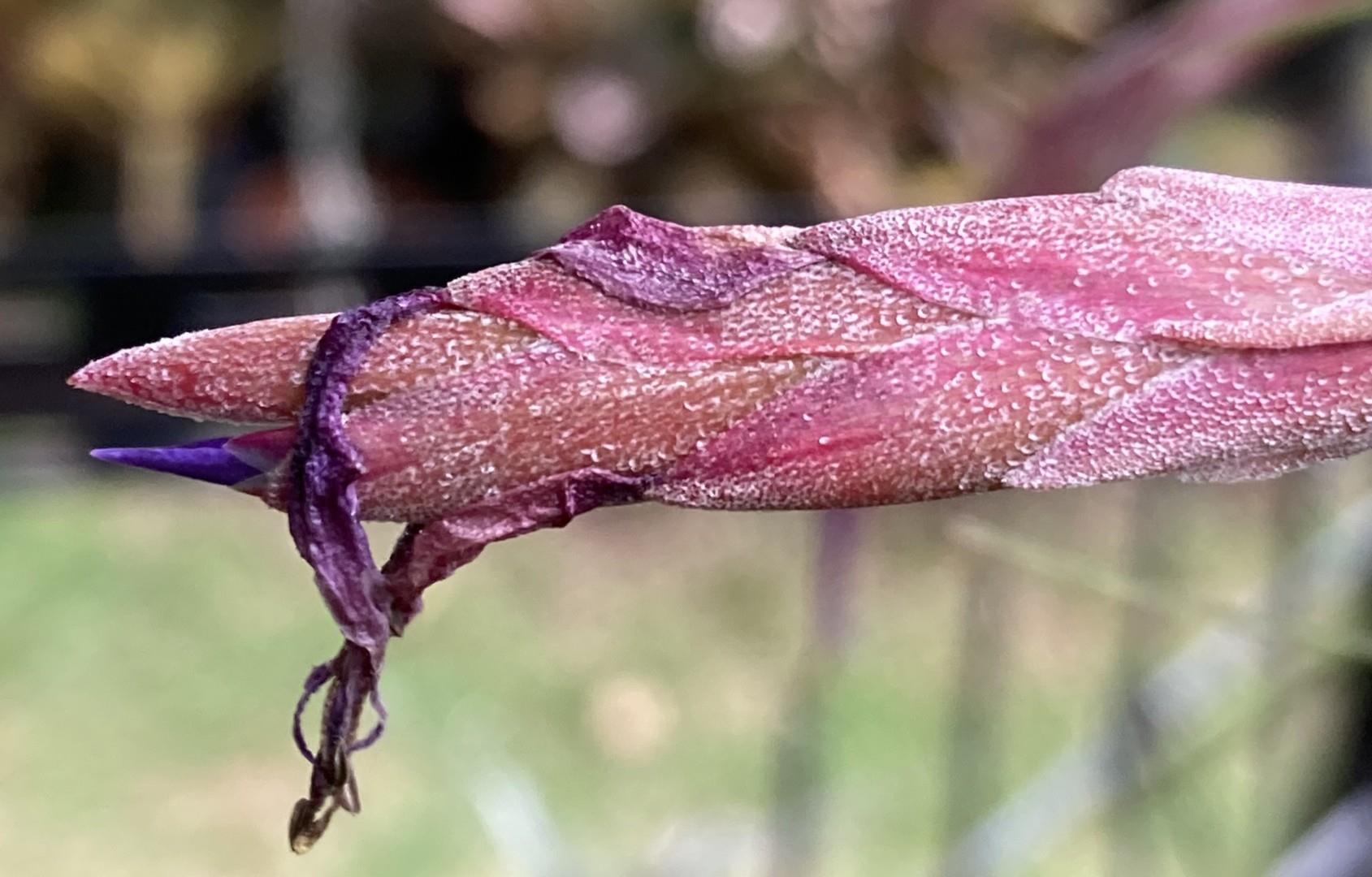
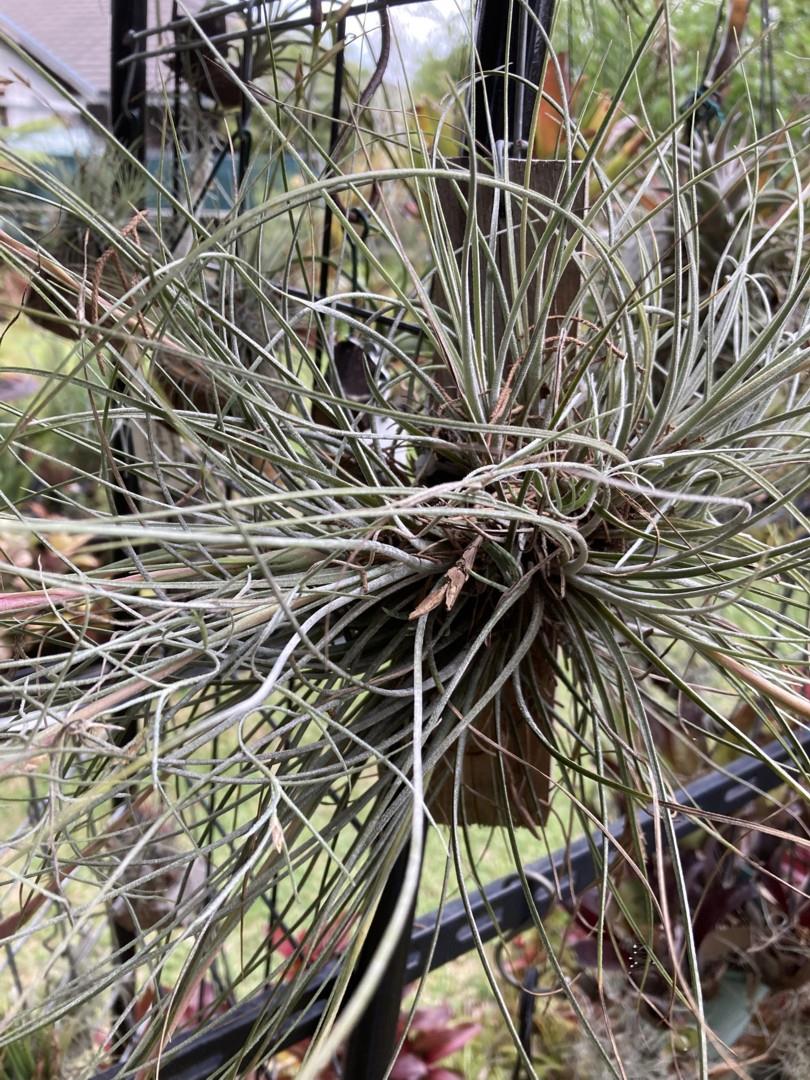
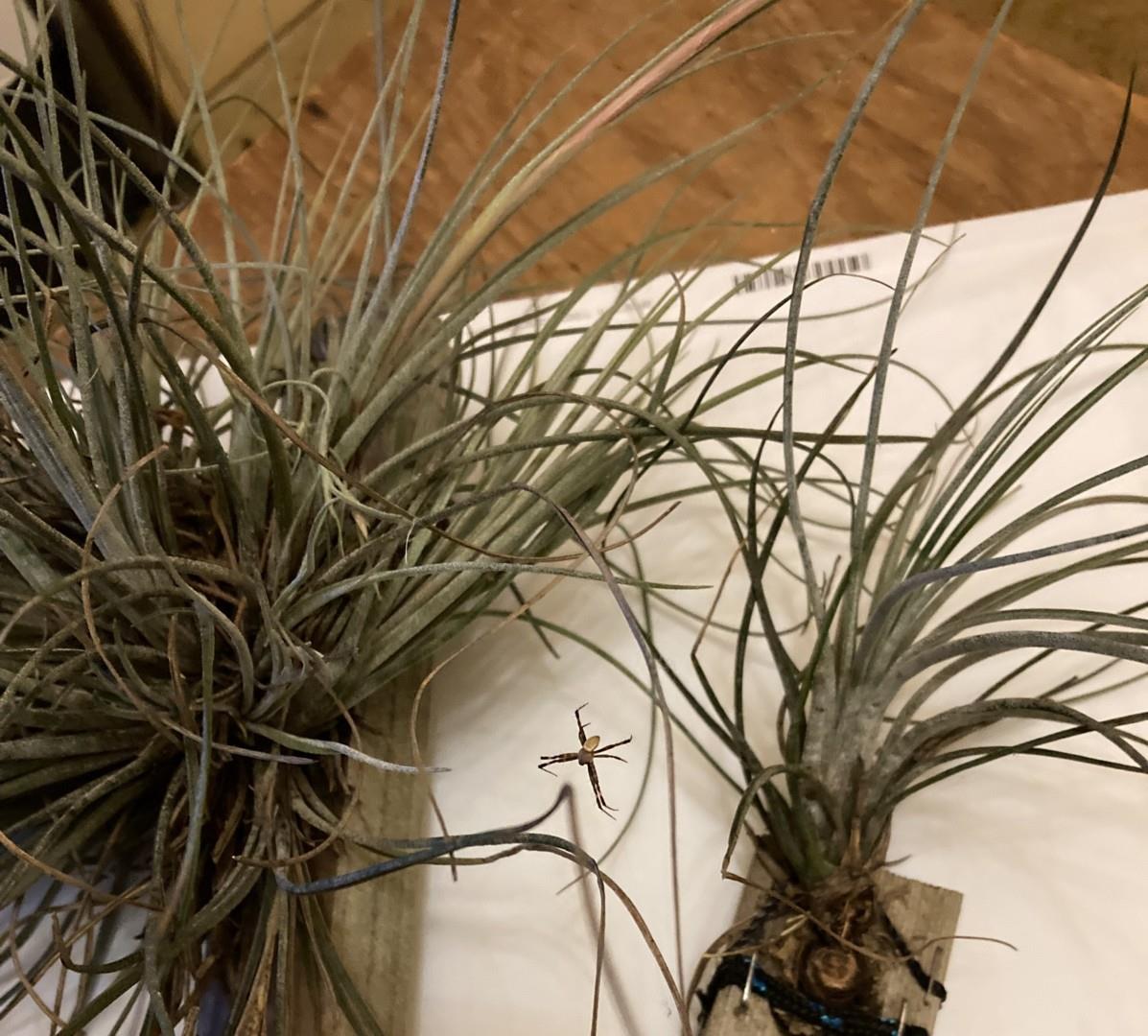

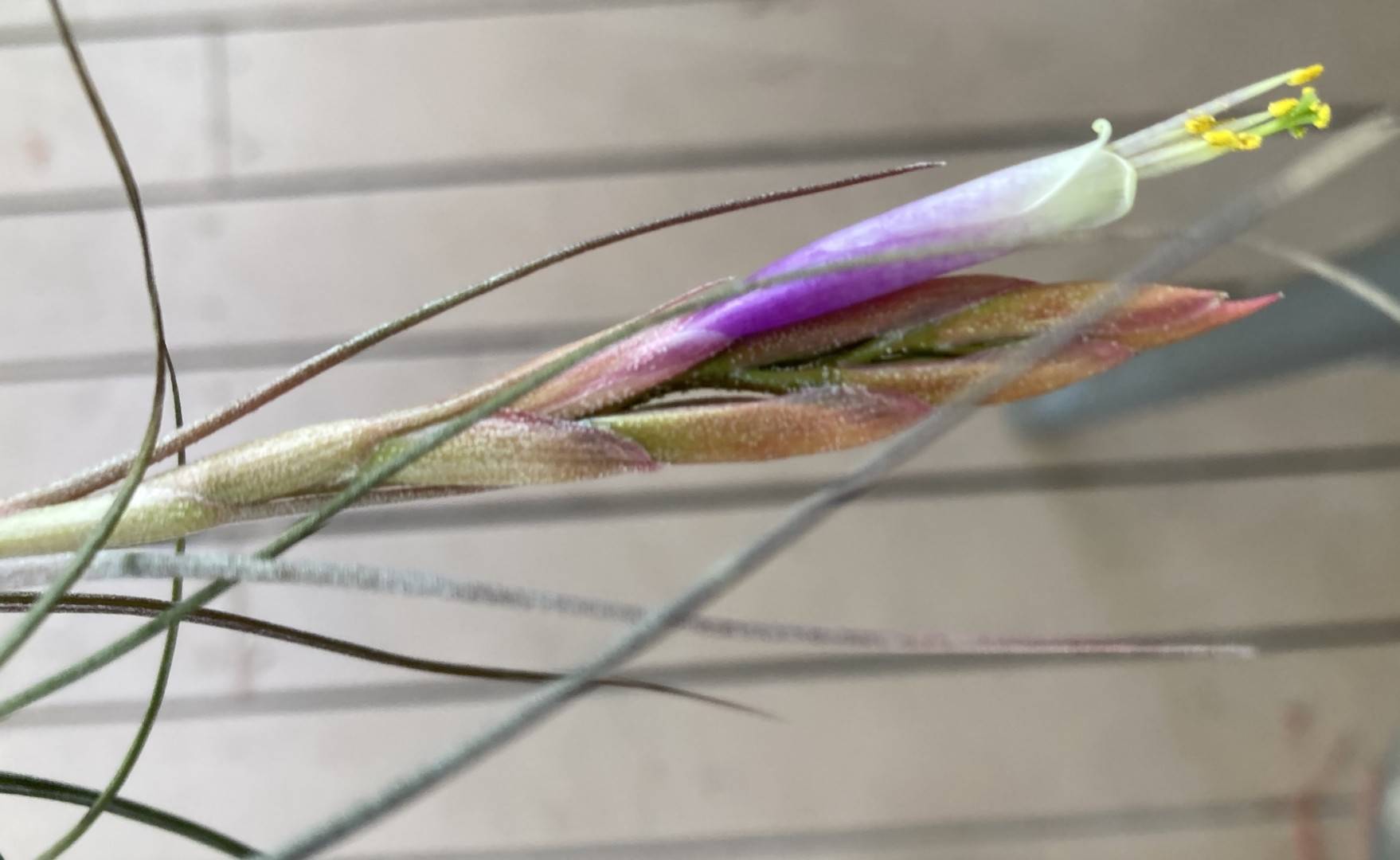
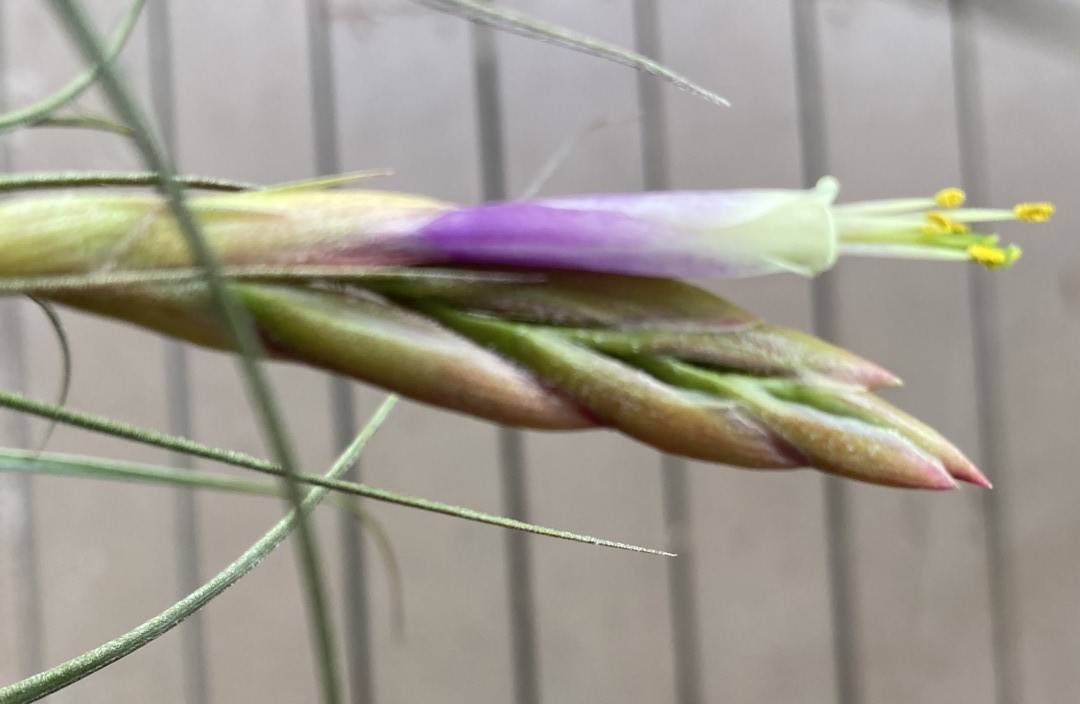
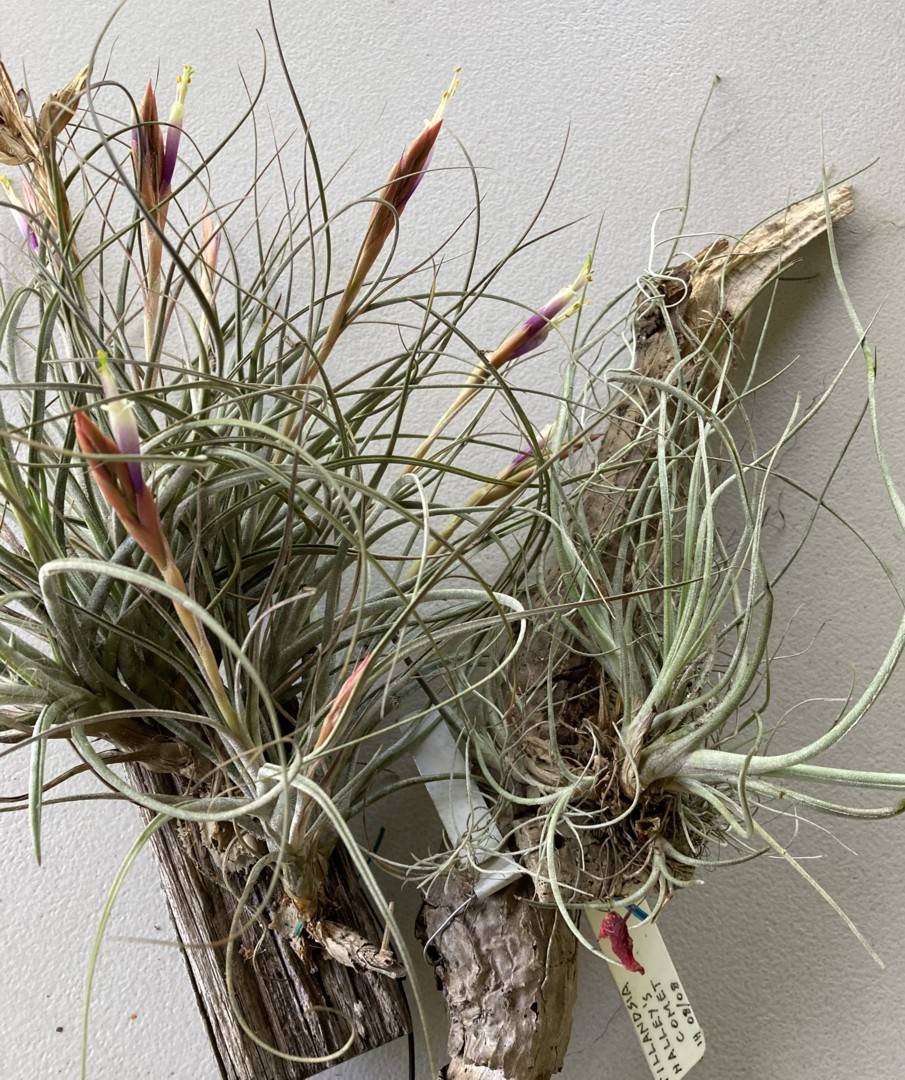
In my investigations I am leaning towards T. Taurus, another from the tangle of schiedeana hybrids. Particularly since many of my Tills have links to Ken Woods and Terry Davis. (and apparently the name 'Taurus' was suggested by me in 2012!)
Plant stemless, flowering 2-4 dm high, growing in dense masses.
Leaves several in a bulbous rosette, equaling or exceeding the inflorescence, densely appressed-cinereous lepidote throughout;
Sheaths ovate, relatively small, forming an ovoid pseudobulb 2-5 cm long, passing gradually into the blades, often conspicuously ciliate-lepidote;
Blades contorted, linear, involute-subulate, attenuate, 5 mm in diameter at base.
Scape erect or ascending, 2 mm in diameter, cinereous-lepidote;
Scape-bracts like the leaves but smaller and with narrow sheaths which are often shorter than the upper internodes.
Inflorescence simple;
Spikes linear, 4-10 cm long, 12 mm wide, subdensely 6-17-flowered, complanate, appressed-cinereous-lepidote.
Floral bracts suberect, loosely imbricate, ovate, acute, 2 cm long, exceeding the sepals, about three times as long as the internodes, ecarinate, lepidote, subchartaceous, prominently nerved, roseate;
Flowers subsessile.
Sepals lanceolate, acute, to 16 mm long, chartaceous, prominently nerved, cinereouslepidote, short-connate posteriorly;
Petals ligulate, 3 cm long, purple;
Stamens and pistil exserted.
Capsule slenderly cylindric, 4 cm long.
TYPE. V. Bailey ("26") 226 (holotype US), San Ignacio Ranch, Kenedy County (formerly Cameron County), Texas, United States, 8 May 1900.
DISTRIBUTION. Epiphytic in dry thickets, woods and forest, to 1080 m alt, southernmost Texas to North-east Mexico. UNITED STATES. TEXAS, Kenedy County: Sarita,Fischer41072 (GH); 7 Aug 1941, 41172 (F, US); King Ranch, 3 Nov 1949, Swallen 10605 (US); Brooks County: Barroso, 1935, Cory 14139 (GH); Hidalgo County: Mercedes, 25 Mar 1907, York 187 (DS); 18 Feb 1960, Van Hyning s n (US); La joya, 11 Nov 1940, H. R. Reed 36063 (GH); without exact locality, cultivated May 1901, V. Bailey 5206 (US); Cameron County: Brownsville, 8 Apr 1921,R. D. Camps n (GH, US); Mar 1923, Tharp 1896 (US); Nov 1927, Runyon s n (US); Olmito, 23 Oct 1927, Rose & Russell 24197 (GH, US); Port Isabel, 27 Mar 1932, M. E. Jones 29079 (F, MO, POM); La Paloma, 5 May 1940, Lundell8706 (GH, MICH). MEXICO. TAMAULIPAS: Camargo, 30 May 1904, Griffiths 6494 (US); Matamoros, Dec 1938, LeSueur 66 (GH).
Tillandsia baileyi - Texas' Endangered Species by SUE GARDNER in J. Brom. Soc. 25(6): 207-8. 1975
Of the three tillandsias found in Texas, Tillandsia baileyi is the most limited in range. It is found growing only in an isolated area of South Texas, approximately 20 miles south of Kingsville. Its entire habitat covers approximately fifty square miles. All of this area is ranch land; much of it is part of the gigantic and world-famous King Ranch. The land is sandy rangeland with scattered clumps of live oaks. It is in these live oak clumps that T. baileyi makes its home, in the company of the much more wide spread T. recurvata or "ball moss". To the uninitiated, the much larger clumps of T. baileyi when not in flower may easily be mistaken for giant clumps of "ball moss".
Some of the very large clusters of T. baileyi may exceed 18" in diameter. In the spring months, small brilliant pink spikes bearing blue petaled flowers distinguish it even to the untrained eye.
U.S. Highway 77 cuts a path through the King Ranch in this area, and numerous road-side parks and rest stops take advantage of the cooling shade of the oak clusters. Some of these rest stops boast historical markers recalling armies who are said to have rested in the shade of these same oaks on their way to fight for the independence of Texas from Mexico. As recently as 1971, when most of these photographs were made, the branches of the oaks in these road-side parks were heavily laden with colonies of this bromeliad, but with the increased popularity of bromeliads in South Texas, collectors have next to eliminated this lively wild flower from the road-side parks. They have been aided by the highway department who keep the lower branches of the trees removed, often destroying thousands of these plants at a time. These practices along with the very limited range of the species put its survival in the wild into the hands of a few ranch owners. This set of circumstances concerned some of the members of the Corpus Christi Bromeliad Society, who recommended that this plant be placed on the Texas Conservation List. Several months ago at a meeting of TOES (Texas Organization for Endangered Species) T. baileyi was added to the list and is now illegal to collect from public lands. Attempts have been made to introduce this native tillandsia into wild-life refuges in South Texas, but lack of knowledge about its limiting factors, makes these attempts less than certain, and only time will tell how much success will be experienced.